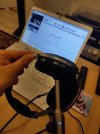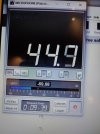Some of you people might find this interesting or useful, I've measured a typical loud level that I listen at on my miniDSP EARS over a range of a few different songs (using my K702 with Harman EQ hugging Harman Curve down to about 35Hz), and I think it's louder than I expected I listen. I don't really know dB(A), dB(Z), but I chose dB(Z) because it seemed to be showing the highest numbers out of the available recording/logging options in REW.
@solderdude I think you have a good understanding of the different dB types, what are we looking at in the following graphs & differences between dB(A) dB(Z), etc, could you help put some perspective to it above & beyond what I think I've worked out below?
Here are graphs showing how the dB(Z) levels changed through a few various tracks I would listen to. First one I'm gonna show you is one of my loudest tracks subjectively with lots of bass but also lots of everything else, it's
Muse, Supermassive Blackhole:
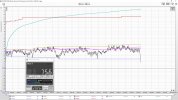
LzPeak, the red line is representing the bass in the track I'm pretty sure - maxing out at 103dB(Z), that's quite a lot it seems, I always thought I didn't put this much energy into my headphones (hello distortion measurements??).
Now following is a graph of a track that is not a loud track, but it's got ungodly amounts of bass in it, and so far is the track that I have to make sure has the highest negative preamp to avoid digital clipping (bass EQ), this is
Massive Attack, Angel:
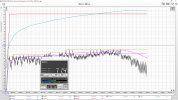
Here you can see that the LzPeak red line is at a maximum of 104dB, so that's in the bass, whereas the rest of the music is not as loud as the Muse track (first graph).
And following just one more track for the hell of it,
Massive Attack, Inertia Creeps:
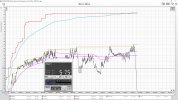
I think I listen louder than I worked out theoretically, when I calculated it last year - either I listen louder nowadays or I've misinterpreted the information.
EDIT: or perhaps the LzPeak red line is not the bass and it might just be representing the 4kHz peak that the miniDSP EARS is renowned for in how it measures & displays it's frequency responses, see red circled in following graph? That peak in the measured frequency response is 17dB higher, so LzPeak might just be an artifact of that right rather than actually measuring the bass, I'm not sure? But whilst watching real time development of LzPeak it seemed to coincide with bass notes, so I'm still leaning towards LzPeak representing the bass during my measurements.


